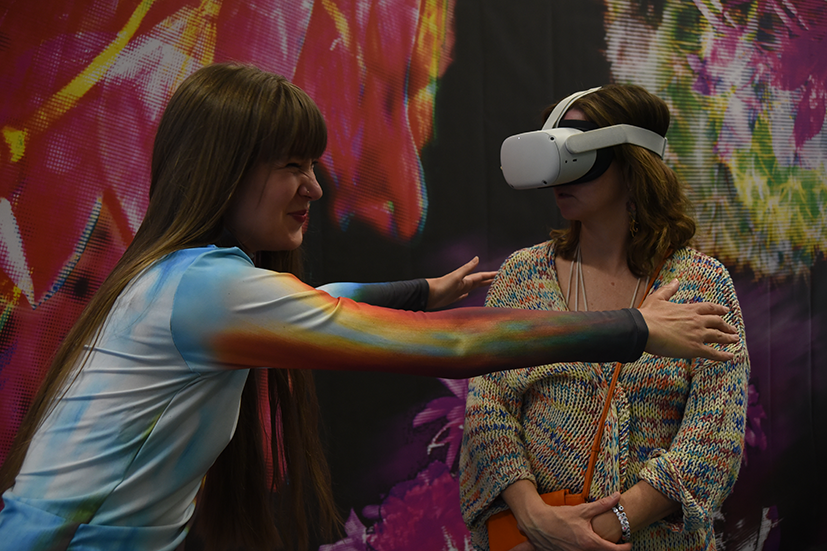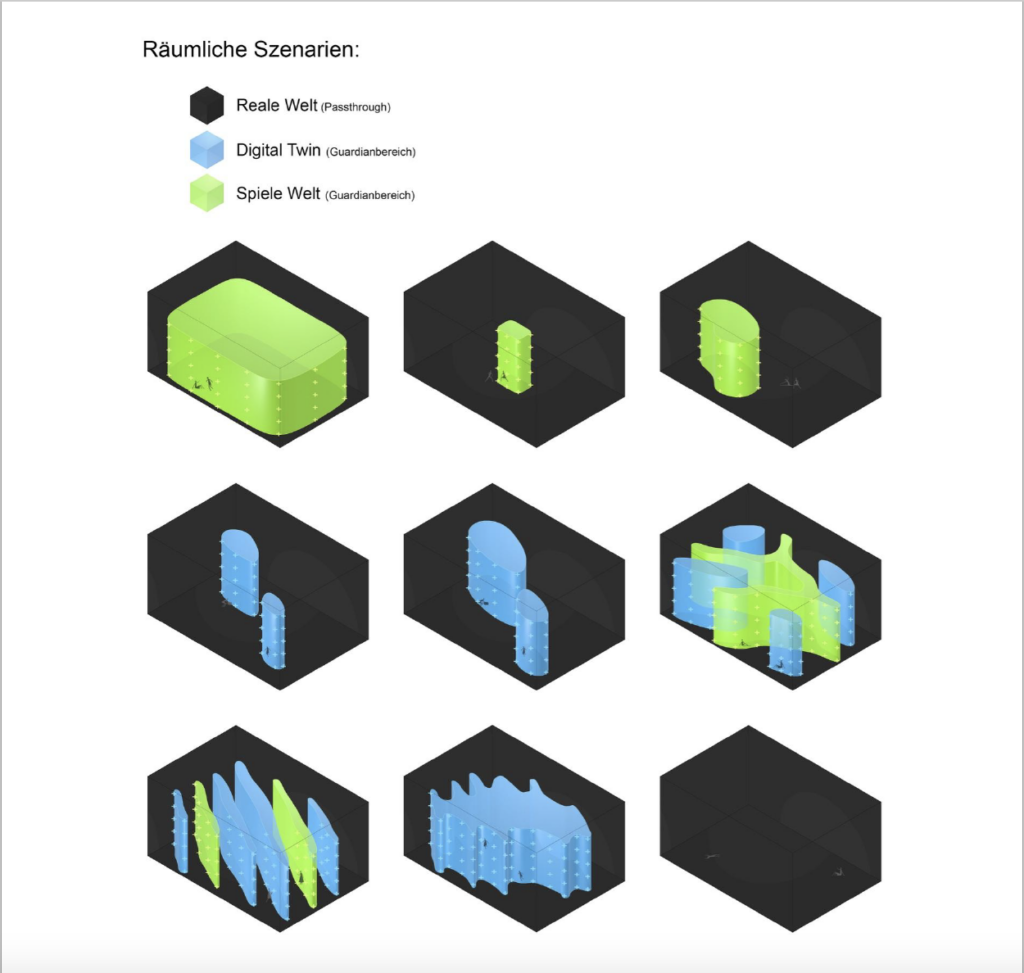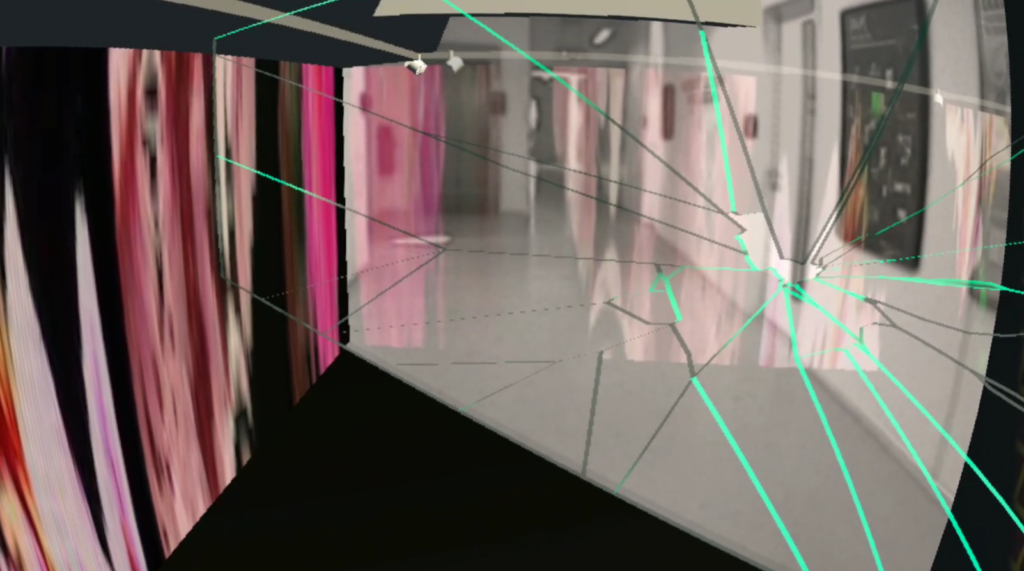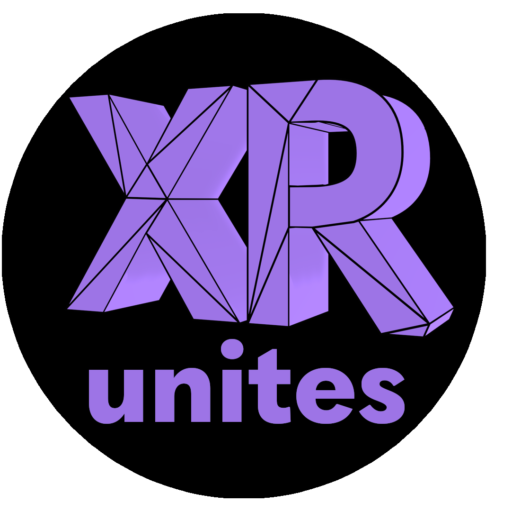
Mixed reality scifi mini opera with Oculus Quest 2 VR headmounted display, soprano und drama, 2023
Production with Nora Krahl, Amir Baltić and Christoph Clausen
Story
It is the year 2032 and the interpersonal energy has become so bad throughout the world that the entire system of existential energy threatens to reach an irretrievable tipping point … Like islands, chaotic holes open up in space in ever different places and expand until they take over the entire space.
The spectators stagger in an increasingly intangible situation towards the end of the world, they sink into a formless chaotic system with the knowledge that all this could have been prevented.
The audience first enters the VR world of a feel-good VR computer game (see fig.), which is stopped several times as strange things happen. The audience learns that the particle accelerators at CERN have recently been producing absolutely chaotic and inexplicable results that negate all theories of particle physics. Over an online radio/news ticker news about the instantaneous massive conflicts of the world run. And there is the theory that in the biggest crises situations, these inexplicable things happen in the CERN, which sounds of course very much like conspiracy theory. It leads to a dispute between the two protagonists, which in turn lets reality begin to unravel. Since the theory is actually correct: The interpersonal energy system and thus the energy of existence is about to topple and at this point a simple dispute can tear holes in reality. CERN was only the beginning …

For this production, the interdisciplinary team was experimenting with the pass-through mode of the VR headmounted display Oculus Quest 2, exploring ways to combine this black-and-white camera view of the physical world with digital augmentations and the purely virtual experience.
Research questions:
- What new possibilities does the pass-through mode offer for performating arts and XR development?
- Which irritations of perception occur and how are they received?
- Are body sensation/perception influenced by the experience?
- How does the audience interact?
- How are the physical actors (acting/soprano) perceived?
- Occlusion* is technically not possible in the passthrough mode of the Oculus Quest 2 (and Pro) – can it be imitated convincingly?
* Virtual objects are occluded by physical objects and vice versa, depending on the user’s perspective.

Artists:
Nora Krahl (direction and composition)
Amir Baltić (stage setting, aesthetics)
Christoph Clausen (text)
Lisa Ströckens (soprano)
Laura Waltz (acting/drama)
Advisory: Vincent Kaufmann.
Development (XR_Unites, HTW Berlin):
Leonid Barsht (head XR developer)
Laura Magdaleno Amaro (XR development)
Ekaterina Losik (digital media production, XR development)
Manja Wischer (XR development)
Maja Stark (project management XR_Unites)
Scientific publication
Laura Madgaleno Amaro/Jürgen Sieck (2023): »Am Ende Der Welt: Shifting MR Boundaries With a Co-Located Multiplayer with Meta Quest 2«, in: IEEE 12th International Conference on Intelligent Data Acquisition and Advanced Computing Systems: Technology and Applications (IDAACS). Doi: 10.1109/IDAACS58523.2023.10348744.
Interested?
If you are interested in the installation, e.g. for exhibitions or festivals, feel free to use our contact form.
Funding
Supported by the European Regional Development Fund in the INP-II program and by the Performing Arts Fund from funds of the Federal Government Commissioner for Culture and the Media in the framework of NEUSTART KULTUR.
